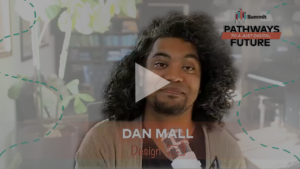Ageing Population – a global problem
Census shows that the older populations in the third world are projected to triple by 2020. How do we prepare for this population shift?
In view of Malaysia heading towards an ageing nation, as a private healthcare provider, especially one that aspires to be the regional centre of Elderly Health Services, there are several matters to consider in terms of preparation. It is a global problem for most nations, coupled with significant shortages in aged care residential homes.
It would be interesting to know how different parts of the world are preparing for this population shift in terms of hospital readiness :
- Considering the care continuum through to end‑of-life care
- Preparation for long-term care as well as non-communicable diseases
- Improved chronic disease management
- In terms of considering alternative care delivery models like retail clinics, telehealth, and medical tourism, what should we be considering?
- What hospital facilities need to be considered in terms of caring for the elderly
Lastly, the private healthcare system in Malaysia have been looking into the bundling system for the last couple of years and this would be one of the great reasons to implement it to ensure quality healthcare with cost containment for this sector of the society.
- What factors need to be considered when creating the bundling system for chronic disease management?




Given the scarcity of medical professionals and the severe demographic problems all around the world, increasingly providers will rely on technology to deal with these issues. Examples of applicable technologies will be RFID identification and tracking of people, Virtual desktops allowing providers to use technology from home and remote locations; cloud computing, clinical decision support tools.
If you want to prepare for bundled payments for chronic disease management you will need to very clearly define the pathways patients follow through your system, allocate all the costs correctly (with TDABC as we learned), and measure your results (we try to use ICHOM standard sets whenever possible; http://www.ichom.org/). The combination of these three steps allows you to see what you do, how much it costs, and what result it delivers. If you change anything in your practice (for example a certain test only once a year and not four times a year) you can see the effect on both cost and result. I believe this is a good way to create value for your patients and for the payer.
Not only will the population shift with the aging world but the costs associated with the care of the elderly will also markedly increase. It is well known that the highest costs of care are incurred in the last stages of life. Therefore, we have a two fold problem that I believe needs a multi-pronged approach to tackle.
There are a few innovative ideas that I feel are starting to address this particular problem:
– Senior Emergency Department Care: Seniors have special needs, especially in a time as vulnerable as an emergency. Specially trained staff in the care of the aging population with environmentally tailored and designed rooms (non-slip flooring, special lighting) to help create a peaceful healing environment for both patients and caregivers. This particular hospital system (which I am not affiliated with!) has a similar approach with the Senior Surgery Center and a Senior Behavioral Health program.
– Home Based Primary Care – Keeping elders at home to ‘Age in Place’ and meet their healthcare needs without the need for facilities (or overhead), specifically in chronic disease management. The Independence at Home Pilot (frequent primary care visits for chronically ill seniors) in 2016 yielded great results and improved outcomes: $10M in healthcare savings, 10% fewer ED visits, 9% fewer hospitalizations and 27% few SNF stays. Source: Effects of Home-Based Primary Care on Medicare Costs in High-Risk Elders; Journal of the American Geriatric Society; July 2014.
– Mobile Acute Care home delivery platforms: Innovative approach to treat minor emergent, urgent complaints in the home with Advanced Practice Providers equipped with sophisticated technology and care delivery equipment (mobile lab, supplies and procedural capabilities).
– Telemedicine: Improving access to care without the overhead of brick and mortar facilities
– Mobile lab and imaging capabilities: bringing advanced imaging and lab draws into the community, improving access without the need for hospitalization or office visit
– EMS MIH/Paramedicine programs: Using 911/Emergency Medical Systems to see and treat L.A.N.E. (Low Acuity Non Emergent) patients with advanced paramedics under remote physician supervision
– Case Management, Palliative and Hospice care expansion and team development to address end of life decision making relative to quality of life and goals of care.
I cannot recall the genesis of this statistic, however, I thought I would share it anyway (so take it with a grain of salt). It is estimated that by 2024 that approximately 28% of of all hospital/facility care will be delivered in the home. I think there will continue to be a shift from the highest level of care (the hospital) into the community. It will be up to everyone to think outside of the box and further develop the above models of care delivery, particularly to address the aging population.